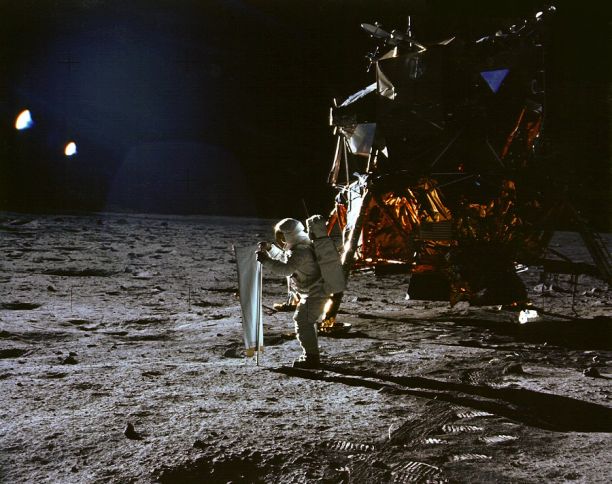
Bright sunlightglints and long dark shadow dramatize thisimage of th lunar surfacetaken by Apollo 11 astronaut NeilArmstrong, the first to wal on the Moon.Pictured is the mission's lunar module, the Eagle,and spacesuited lunar module pilot Buzz Aldri unfurling a long sheet of foil also known as th Solar Wind Collector.Exposed facing the Sun, the foil trapped atoms streaming outwardin the solar wind, ultimately catching a sample o material from the Sun itself.Along with moon rocks and lunar soil samples, the solar wind collector wasreturned for analysisin earthbound laboratories.

